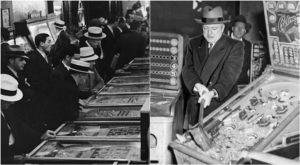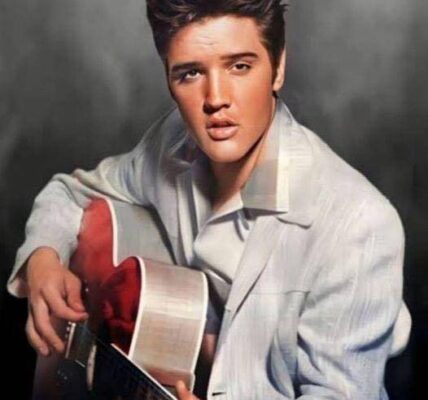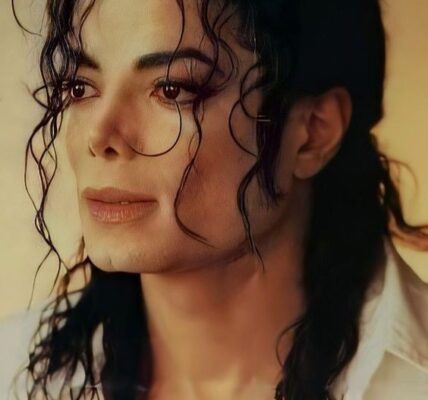
The game of Pinball began far earlier than most might imagine. All the way back to the 1600s and 1700s, people enjoyed outdoor lawn games like croquet or bocce, but eventually looked for ways to bring such games indoors, where they could be played on a table or pub floor. Thus, games like billiards and bowling were created. Over more than a hundred years, these games were changed and made smaller still, until they became tabletop varieties with boards where nails (a.k.a pins) surrounded holes that small marbles were shot or ricocheted into. In 1869, Montague Redgrave, a British inventor, moved to the United States and began manufacturing these “Bagatelle” tables, as they were known at the time. Just two years later, he created the spring launcher for the games, and the modern pinball machine was birthed.
These bagatelle games continued, fairly unchanged, until 1931, when they became coin-operated. Players would head to the local drugstore or tavern where, for one penny, he would be given five to seven balls, which would be launched by Redgrave’s spring-loaded plunger. However, the player was at the mercy of the bouncing marble. The game’s board was simply a wooden base under glass, with various pins and holes. There was no way, except by tipping the table, to control where the ball went. In 1933, electrification was added to the first pinball machine in the form of flashing lights, active bumpers, and a solenoid which would propel the ball up and out of a hole in the center of the board if it landed there during a turn. It wasn’t until 1947 when the flippers were added to the board to keep the ball in play longer.

Did You Know Pinball Was Actually Banned in Major US Cities From the 1940s Until the 1970s_Thai
Perhaps the person in the United States most committed to the pinball prohibition was New York Mayor Fiorello LaGuardia. One of the contentions put forth by LaGuardia was that pinball was stealing money from the children. He contended that kids were spending their lunch money on the machines.
LaGuardia also contended that pinball was a mob racket. In fact, the so-called mafia was involved in arcade style games beginning during the Great Depression and heading forward into the 1980s and 1990s.
In response to the New York City pinball prohibition, LaGuardia had the police department conduct raids on suspected locations where pinball was being played. These raids had the look and feel of the types of police interdiction that occurred during the prohibition of alcohol in the country some years earlier. Indeed, LaGuardia ordered the police to round up pinball machines across the city and arrest their owners. As an aside, LaGuardia began his pinball raids shortly after Pearl Harbor was attacked.
Thousands of pinball machines were seized in raids. Hundreds of pinball machine owners ended up arrested, some serving time in jail. The machines that were seized ended up smashed with sledgehammers, what remained being dumped into one or another of the rivers in the greater New York City area.
With the advent of the pinball bans in different cities, pinball went underground. In New York, pinball machines ended up moving to venues like porn shops in places like Harlem and the East Village. These venues really did become something of pinball speakeasies.
Although people like the New York City Mayor considered pinball an evil, it really wasn’t until the games ended up in porn shops and similar venues that the game started to take on an air of immorality or vice. This reputation would persist well into the 1970s. Indeed, from time to time even today there are hints that at least some people still find pinball a somewhat disreputable activity.
The end of the prohibition on pinball occurred in New York in 1976. The ban in New York came about when a magazine editor named Roger Sharpe played the game in front of governmental officials to prove it was a game of skill and not chance. At the beginning of his effort, things did not go well for him.
Ultimately, he was able to take a shot and accurately project its trajectory. This worked to convince New York City officials that pinball could be considered a game of skill. This was the final factor in the city government making pinball legal again.
Throughout the 1970s, other cities lifted their bans on pinball. There probably are still some cities that have these ordinances on their books. However, no city appears to enforce them any longer.

Did You Know Pinball Was Actually Banned in Major US Cities From the 1940s Until the 1970s_Thai
Did You Know Pinball Was Actually Banned in Major US Cities From the 1940s Until the 1970s_Thai
Did You Know Pinball Was Actually Banned in Major US Cities From the 1940s Until the 1970s_Thai
Did You Know Pinball Was Actually Banned in Major US Cities From the 1940s Until the 1970s_Thai
Did You Know Pinball Was Actually Banned in Major US Cities From the 1940s Until the 1970s_Thai
Did You Know Pinball Was Actually Banned in Major US Cities From the 1940s Until the 1970s_Thai
Did You Know Pinball Was Actually Banned in Major US Cities From the 1940s Until the 1970s_Thai
Did You Know Pinball Was Actually Banned in Major US Cities From the 1940s Until the 1970s_Thai

Did You Know Pinball Was Actually Banned in Major US Cities From the 1940s Until the 1970s_Thai
Did You Know Pinball Was Actually Banned in Major US Cities From the 1940s Until the 1970s_Thai
Thanks you for viewing the articles, please like and share to your family !















